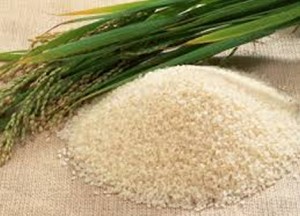Local rice farmers learn technology to improve production
 Rice farmers in the Daffiama and Sankana Communities in the Upper West Region, have been trained on Urea Deep Placement (UDP) and rice transplanting technologies to help increase rice production in the dry season.
Rice farmers in the Daffiama and Sankana Communities in the Upper West Region, have been trained on Urea Deep Placement (UDP) and rice transplanting technologies to help increase rice production in the dry season.
Out of the 100 rice farmers in the Daffiama Community who were trained, 61 farmers, comprising six men and 55 women are already implementing the technologies, Mr Dauda Wahu Haruna Regional Agronomist of International Fertilizer Development Centre (IFDC) and Agriculture Technology Transfer (ATT) Project told journalists at a “Farmers Field Day” at Daffiama in the Daffiama, Bussie, Issa District.
As part of the intervention, ATT organised the Day for the farmers to see the impact of the technologies at the vegetative stage.
He said the IFDC-ATT provided rice seeds, free fertilizers and technical -know -how to the farmers to increase rice yields.
The goal of the project is to increase the availability of appropriate and affordable technologies to improve the competitiveness of maize, rice, and soybean value chains in northern Ghana.
It focuses on integrated soil fertility management, seed sector promotion and up scaling of high quality seeds, capacity building in research.
Mr Haruna said the farmers planted the rice on rolls, which allowed more rice to be planted and made weeding and harvesting easier and faster.
It also reduced cost and allowed maximum utilisation of fertilizer than the traditional broadcasting system.
A plant could develop about 25 to 30 tillers as compared to the traditional method of broadcasting, which produced about 14 tillers.
The IFDC-ATT Agronomist, said, the project had been introduced in Tono, Vea in the Upper East Region and Bontanga and Golinga in the Northern Region, which yielded positive results.
“Farmers implementing the technology have been realising rice yields between 24 and 28 bags per an acre of land as compared to the traditional system of broadcasting, which, gave them between three and five bags,” he added.
With the new technology, farmers could use 2.5 kilogrammes of rice for an acre of land instead of the 50 kilogrammes used on the same field with the traditional method.
Mr Haruna said the project had acquired four briquettes machines to produce fertilizers for rice farmers in the Upper East and Northern Regions and that had helped increased the crop production to more 300 per cent.
Mr Samuel Ayamga Atia, Regional Technical Manager of the ATT, said, apart from the two communities, 10 other communities have been identified in the region to benefit from the project.
The ATT in collaboration with Ghana Irrigation Development Authority has established learning centres on the fields for rice farmers to see all the best practices that are associated with the technologies.
He said the farmers were involved in the training on all the practices such as nursery, transplanting and UDP application.
Mr Atia said the UDP, which involves placing urea briquettes at a depth of seven and 10 cm between four rice plants seven to 14 days after transplanting, was developed to improve nitrogen fertilization in irrigation rice systems.
“This one time application of the urea significantly reduces the recommended rates of urea while increasing the yields of paddy rice by an average of 15 and 30 per cent,” he explained.
The technology helps to reduce nitrogen losses through run-off, and leaching volatilisation and enhances the availability of nitrogen for the crops, he added.
It also suppresses weeds growth thereby reducing cost of weeding while increase yields and reduce cost of fertilizer.
Some of the farmers who interacted with journalists said, they were happy with the vigour of the crops and surprised with the high number of tillers each seedling had produced averaging 21 tillers.
The farmers said, during this rainy season, all the 20 hectares irrigable land area would be put under rice cultivation using the technologies.
They however expressed disappointment that livestock are destroying the rice and appealed to community members to control the movement of the animals.
The farmers also appealed to the sponsors of the project to consider fencing the fields to stop stray animals from destroying the crops.
The US Agency for International Department’s Ghana Mission, is funding the five-year project to increase the competitiveness of rice, maize and soybean value chains, fostering broad-based and sustained economic growth through the increase availability of agricultural technologies and increasing productivity in northern Ghana.
The project focuses on Ghana’s Feed the Future intervention zone covering the savannah ecological zones of Northern, Upper East and Upper West Regions.
The International Fertilizer Development Centre is the lead implementer of the ATT project.
Source: GNA
